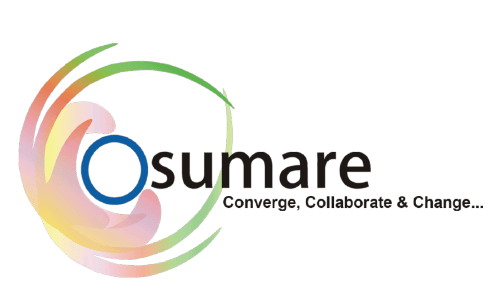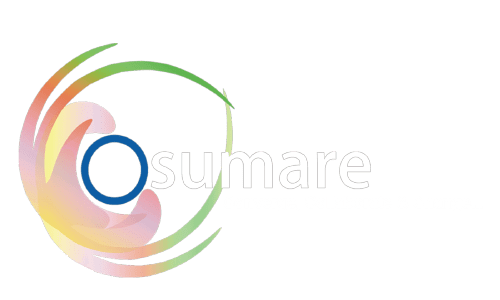In today’s digital landscape, businesses need more than just a strong online presence—they need visibility. Mastering PPC has emerged as one of the most effective ways to reach potential customers instantly, drive traffic, and boost conversions. Whether you’re running Google Ads, Bing Ads, or social media campaigns, mastering PPC is crucial for maximizing your advertising impact.
PPC may sound straightforward—you pay when someone clicks your ad—but successful campaigns require careful planning, strategic targeting, and continuous optimization. Let’s explore the key strategies that can help you get the most out of your PPC investment.
• Understanding PPC
PPC is an online advertising model where advertisers pay a fee each time their ad is clicked. Unlike organic search strategies, PPC offers instant visibility on search engines or platforms like Google, Bing, Facebook, LinkedIn, and Instagram.
PPC campaigns are versatile and can target:
Search Ads: Appear on search engine results pages (SERPs) when users type specific queries.
Display Ads: Shown on websites, apps, or videos within the Google Display Network.
Social Media Ads: Appear on platforms like Facebook, Instagram, LinkedIn, or TikTok, tailored to user interests and demographics.
Remarketing Ads: Target users who have previously interacted with your website or app.
The primary goal of PPC is not just clicks—it’s return on investment (ROI). The right strategy ensures that every ad dollar brings measurable results.
• Setting Clear PPC Goals
Before launching any PPC campaign, define your goals. Clear objectives determine campaign structure, targeting, ad creatives, and budget allocation. Common PPC goals include:
Increasing Website Traffic: Attracting more visitors to your website for branding or awareness.
Generating Leads: Capturing email addresses, sign-ups, or inquiries through landing pages.
Boosting Sales: Driving e-commerce purchases or service sign-ups.
Brand Awareness: Promoting your brand to a wider audience through display or social media ads.
Setting measurable goals allows you to track performance and optimize campaigns effectively.
• Keyword Research: The Foundation of Search Ads
For search-based PPC campaigns, keyword research is critical. The right keywords connect your ads to users actively searching for your products or services.
Types of Keywords:
Short-Tail Keywords: Broad terms like “digital marketing” or “running shoes.” These have high search volume but can be expensive and competitive.
Long-Tail Keywords: Specific phrases like “best digital marketing agency in Delhi” or “women’s running shoes under ₹2000.” These are cost-effective and attract high-intent users.
Negative Keywords: Words that prevent your ad from showing for irrelevant searches, saving budget and improving ROI.
Using tools like Google Keyword Planner, SEMrush, or Ahrefs helps identify profitable keywords for your PPC campaigns. Mastering PPC begins with proper keyword research, as it ensures your ads reach the right audience.
• Crafting High-Performing Ads
Your ad copy is the first thing users notice. A compelling ad increases click-through rates (CTR) and improves ad quality scores, lowering costs per click.
Tips for Writing PPC Ads:
Use Attention-Grabbing Headlines: Include the main keyword and value proposition.
Highlight Benefits: Focus on what the user gains—discounts, free trials, fast delivery, or solutions to their problem.
Include a Strong Call-to-Action (CTA): Encourage users to act immediately with phrases like “Buy Now,” “Sign Up Today,” or “Get a Free Quote.”
Ad Extensions: Use site links, call extensions, location extensions, and structured snippets to provide more information and increase visibility.
Well-written ads paired with strategic targeting result in higher engagement and better ROI. Mastering PPC requires continuous testing and refinement of ad copy to maximize results.
• Optimizing Landing Pages
Clicking an ad is just the first step. Your landing page must convert visitors into customers. A poorly designed landing page can waste PPC budget despite high CTR.
Best Practices for PPC Landing Pages:
Consistency: Ensure the landing page matches the ad’s message and keywords.
Clarity: Use concise headlines, clear benefits, and easy-to-read content.
Strong CTA: Make the desired action obvious—form submission, purchase, or download.
Fast Loading Speed: Slow pages lead to higher bounce rates and lower ad performance.
Mobile-Friendly Design: Over 60% of users browse and click ads on mobile devices.
Optimized landing pages improve conversions and lower your cost per acquisition (CPA).
• Targeting the Right Audience
PPC success depends on showing your ads to the right people. Platforms offer advanced targeting options to reach high-intent users:
Demographics: Age, gender, location, income, or job title.
Interests and Behaviors: User preferences, hobbies, online behavior.
Device Targeting: Desktop, mobile, or tablet-specific campaigns.
Remarketing: Reach users who previously visited your site but didn’t convert.
Precise targeting reduces wasted ad spend and improves campaign ROI.
• Bidding Strategies and Budget Management
PPC platforms operate on an auction system. Advertisers compete for ad placement based on bid amounts and ad quality. Choosing the right bidding strategy impacts both visibility and cost.
Common Bidding Strategies:
Manual CPC (Cost Per Click): Set bids for each keyword individually.
Enhanced CPC: Adjusts bids based on the likelihood of conversion.
Target CPA (Cost Per Acquisition): Automatically optimizes bids to achieve a desired cost per conversion.
Target ROAS (Return on Ad Spend): Focuses on maximizing revenue relative to spend.
Budget management is equally important. Start small, monitor performance, and gradually increase spending on high-performing campaigns.
• Monitoring and Optimization
PPC isn’t a “set and forget” strategy. Continuous monitoring and optimization are key to maximizing impact:
Track metrics like CTR, conversion rate, cost per click, and ROI.
Test ad variations through A/B testing to identify high-performing creatives.
Adjust bids, pause underperforming keywords, and refine targeting.
Analyze user behavior on landing pages to improve conversions.
Regular optimization ensures that every rupee spent contributes to achieving your business goals.
• Avoiding Common PPC Mistakes
Even experienced marketers can make mistakes that hurt campaigns:
Ignoring Negative Keywords: Leads to wasted clicks.
Poor Ad Copy: Fails to capture user attention.
Overlooking Mobile Users: Misses a significant portion of traffic.
Neglecting Analytics: Makes it hard to measure performance or ROI.
Spreading Budget Too Thin: Results in low-impact campaigns.
Avoiding these errors ensures a more efficient and profitable PPC strategy.
• The Future of PPC
PPC is evolving rapidly with AI-driven automation, audience segmentation, and predictive analytics. Platforms like Google Ads and Meta Ads are increasingly using machine learning to optimize campaigns for better results. Staying updated with trends, testing new features, and embracing automation is part of mastering PPC in today’s competitive environment.
• Conclusion
Mastering PPC is not just about spending money on ads—it’s about strategic planning, precise targeting, compelling creatives, and continuous optimization. From keyword research and ad copywriting to landing page optimization and bid management, every element plays a crucial role in maximizing impact.
Businesses that embrace these strategies see higher traffic, better conversions, and measurable ROI. PPC offers immediate visibility, but only those who master its intricacies can turn clicks into lasting business success.
Start mastering PPC today and unlock the full potential of your digital advertising.

